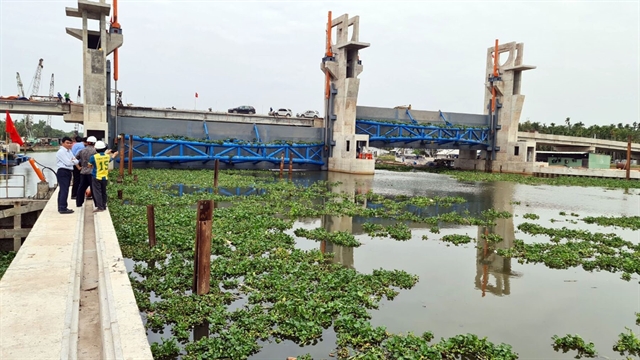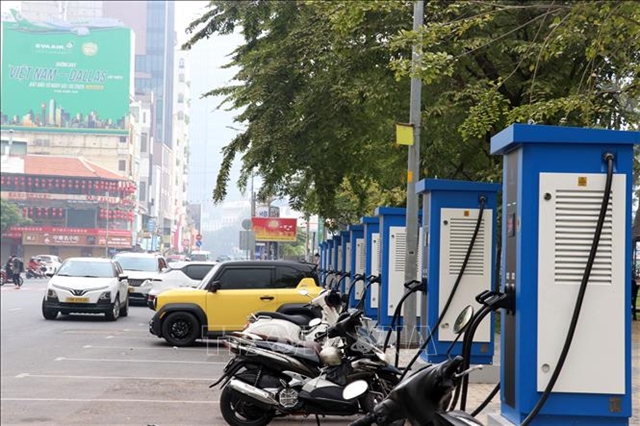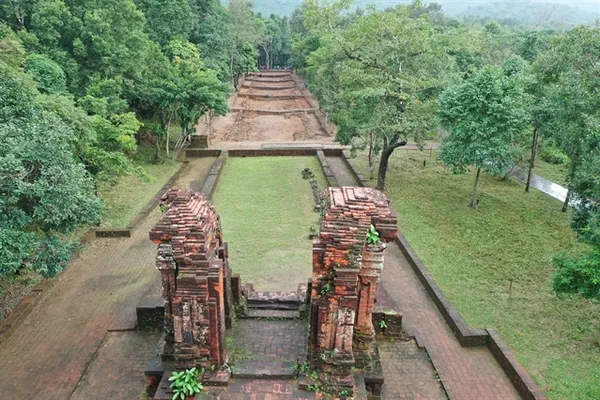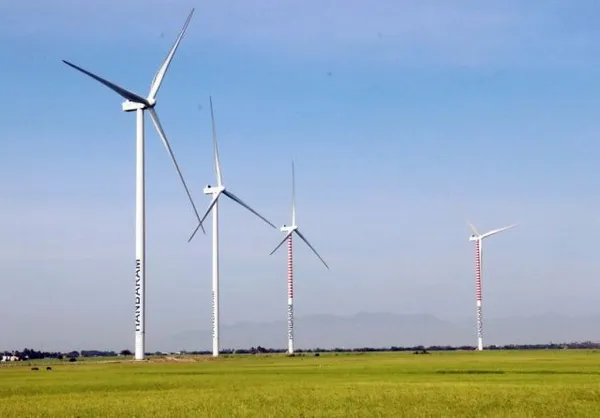 Society
Society

The Cửu Long (Mekong) Delta province of Kiên Giang has built many irrigation projects in recent years to cope with the impact of climate change.

|
| The Cái Bé sluice in Kiên Giang Province. The sluice is expected to officially open in June. – VNA/VNS Photo Lê Sen |
KIÊN GIANG – The Cửu Long (Mekong) Delta province of Kiên Giang has built many irrigation projects in recent years to cope with the impact of climate change.
The irrigation projects were built under Government Resolution 120 issued in 2017 which called for the sustainable and climate-resilient development of the delta.
Nguyễn Huỳnh Trung, head of the province’s Irrigation Sub-department, said that a complete system of 22 sluices were built to prevent saltwater intrusion and store fresh water at the western sea dyke’s Hà Tiên City - Rạch Giá City section.
The sluice system secures irrigation water for agricultural production in the area north of the National Highway 80.
Other large irrigation projects in Rạch Giá City serve agricultural production in Long Xuyên Quadrangle region and nearby areas.
The province is completing construction of 15 sluices on the western sea dyke’s section from the Cái Lớn River to Cà Mau Province.
Another 18 sluices on the western sea dyke are also being built. When these sluices open, they will greatly improve the irrigation system in U Minh Thượng District, which is one of the province’s major agricultural areas.
The province is also speeding up construction of the Cái Lớn – Cái Bé irrigation system, which is the largest of its kind in the delta.
The irrigation system includes the Cái Bé River and the Cái Lớn River sluice, and connects the Cái Lớn River and the Cái Bé River.
Though the Cái Bé sluice was expected to begin operating in June, it was opened early this month, benefiting 20,000ha of farming area.
The construction of the Cái Lớn sluice is expected to be finished in September.
When the irrigation system is completed, it will serve a total area of 384,120ha of agriculture and aquaculture in Kiên Giang, Hậu Giang, Cà Mau and Bạc Liêu provinces.
The Cái Lớn – Cái Bé irrigation system along with the western sea dyke will help the area cope with climate change, rising sea levels and natural disasters.
The irrigation system also helps reduce flooding in the rainy season and saltwater intrusion in the dry season in Kiên Giang, Hậu Giang, Cà Mau and Bạc Liêu provinces.
Kiên Giang, which is the country’s largest rice producer, has built 117 sluices on dykes, dredged 2,700km of irrigation canals, upgraded more than 600 in-field irrigation works, and set up 1,252 pumping stations.
The province’s irrigation works have prevented saltwater intrusion in the Long Xuyên Quadrangle and the western area of the Hậu River.
Besides building irrigation works, the province has planted mangrove forests in coastal areas and other erosion-prevention projects to cope with climate change.
One of the forest planting projects includes creating mud flats for mangrove trees to protect the sea dyke in An Biên District’s Nam Thái Commune. About 30ha of mangrove trees have been planted.
Another 50ha of mangrove forests have been planted in Hòn Đất District’s Bình Sơn and Bình Giang communes.
The province has finished its projects of recovering and developing mangrove forests in coastal areas in the 2016-20 period, according to local authorities. – VNS




